When farming rabbits it is always worthwhile looking at all marketing opportunities. Although when farming on a large commercial scale it is most common to use the large breeds such as New Zealand Whites and Californians, it is often more profitable to look at medium-sized dual-purpose rabbits when farming on a small scale.
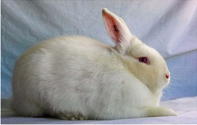
Sustainable farming requires far less bought-in feed, as the rabbits are fed mainly on hay and greens from the vegetable and herb garden, they grow far more slowly than commercially-fed animals. This gives them time to grow into a full adult pelt (fur) before slaughter.
The pelt from a mature rabbit gives the highest possible quality; therefore the highest price when either sold or used to produce a quality product for sale.
Suitable Dual-purpose Breeds
Silver Fox
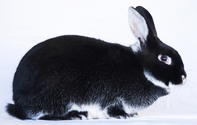
Silver foxes are a well established breed in South Africa and carry a beautiful black fur ticked on the sides with long silvery white hairs. They breed well and are excellent mothers.
Having black fur means they must never be in the direct sun as this changes the colour to a rusty brown and spoils the coat.
Beige
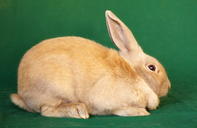
Rex
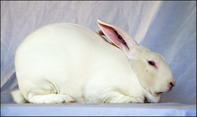
Rexes come in many colours and are the very best fur rabbits of all breeds. The require special housing because of their very fine coats, they do tend to get sore feet, so need good bedding and very clean cages at all times.
What makes Rexes different from other rabbits is their fur. All rabbits have two kinds of hair that make up the fur. In all breeds the top coat is the straight hair on top and the undercoat is the short silky coat under the top coat.
In the Rex the undercoat is longer than the top coat and the fur is plush and has the feel of very expensive velvet material. It is better to get some rabbit farming experience before taking on these beautiful but slightly more difficult rabbits.
Satin
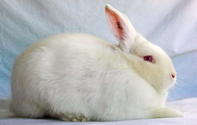
Angora Rabbits
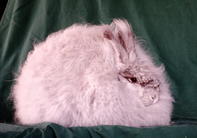
Angora rabbits are a very special breed. They are not bred for meat production but for wool production. They are not slaughtered to provide their wool but are shorn like sheep four times per year. The wool can also be plucked or gently pulled from the rabbit when it is in a full moult.
Angoras come in many colours but require hard work; they need to be brushed and groomed regularly to prevent the wool from matting and must be kept in wire cages above the ground.
They are easy to breed and animals that is either old or not a good producer can be slaughtered and provides a very good carcass.
Angora wool is ideal for hand spinning into beautiful yarns that can either be used for knitting, crocheting or weaving. It would be necessary to invest in a spinning wheel and in spinning lessons but once learned this craft can provide a very good living for the crafter or farmer.
By Karoline Steenekamp